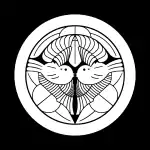Uesugi Norimasa
Uesugi Norimasa (上杉 憲政, 1523 – April 13, 1579) was a daimyō of feudal Japan, and held the post of Kantō Kanrei, the shōgun's deputy in the Kantō region. He was the adoptive father of Uesugi Kenshin, one of the most famous warlords in Japanese history.

At the battle of Kawagoe in 1545, both major branches of the Uesugi family were defeated by Hōjō Ujiyasu of the Hōjō clan. In 1546, he was defeated again in the Battle of Odaihara, this time by Takeda Shingen.[1]
Norimasa's campaigns only continued to be less and less successful. In 1551, he was defeated once again at Siege of Hirai castle by Hōjō Ujiyasu, and fled to Echigo Province, where he sought asylum with his vassal Nagao Kagetora. Nagao agreed to grant his lord shelter and protection, but only under certain conditions. Norimasa was forced to name Nagao his heir, and to grant him the titles of Lord of Echigo and Kantō Kanrei. Nagao then changed his name to Uesugi, to reflect his inheritance of Norimasa's lineage; he took the given name Terutora for a short time before choosing to be called Kenshin.[2][3][4][5]
References

- Turnbull, Stephen (1998). The Samurai Sourcebook. Cassell & Co. p. 2011. ISBN 1854095234.
- Stephen Turnbull and Wayne Reynolds, Kawanakajima 1553–64: Samurai Power Struggle, (Osprey, 2003), 17.
- Turnbull, Stephen (1987). Battles of the Samurai. Arms and Armour Press. p. 44. ISBN 0853688265.
- Turnbull, Stephen (1977). The Samurai, A Military History. MacMillan Publishing Co., Inc. p. 101–123. ISBN 0026205408.
- Sansom, George (1961). A History of Japan, 1334–1615. Stanford University Press. p. 246. ISBN 0804705259.